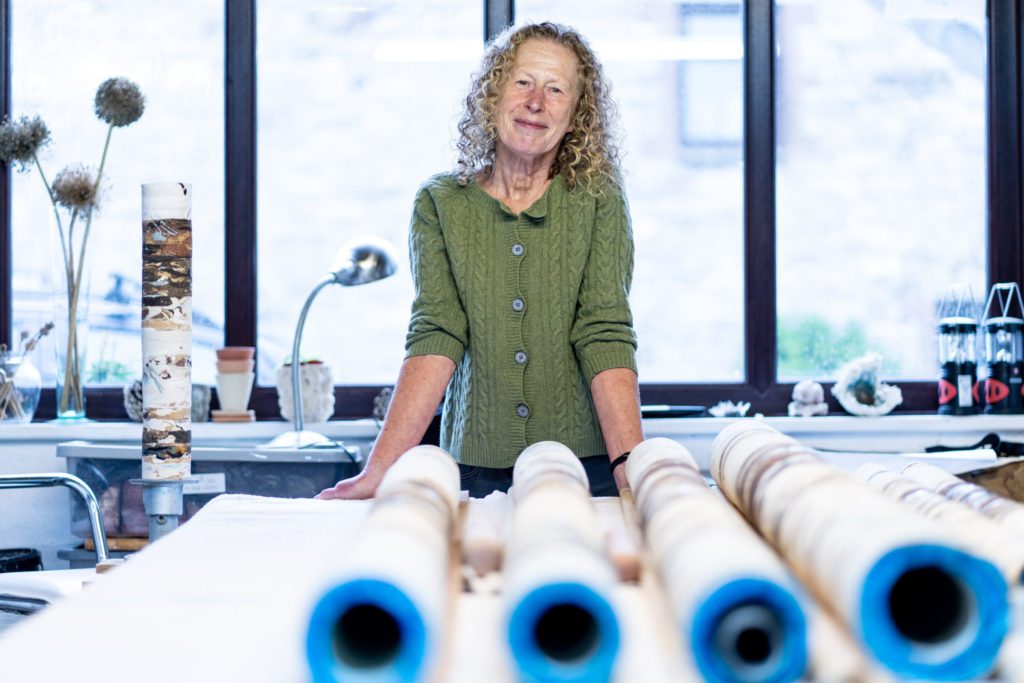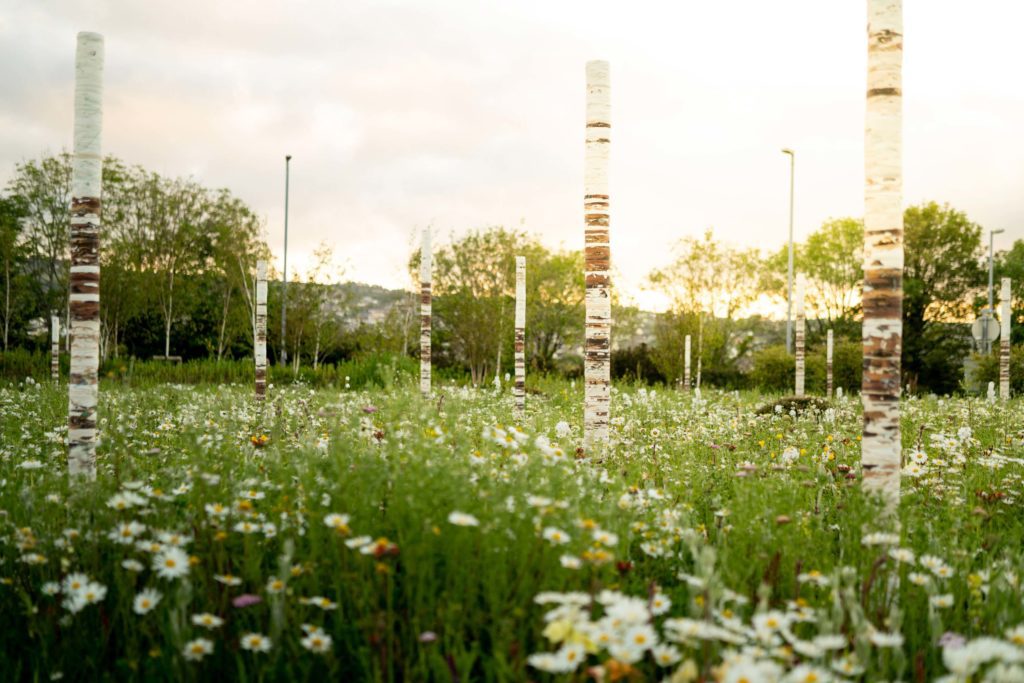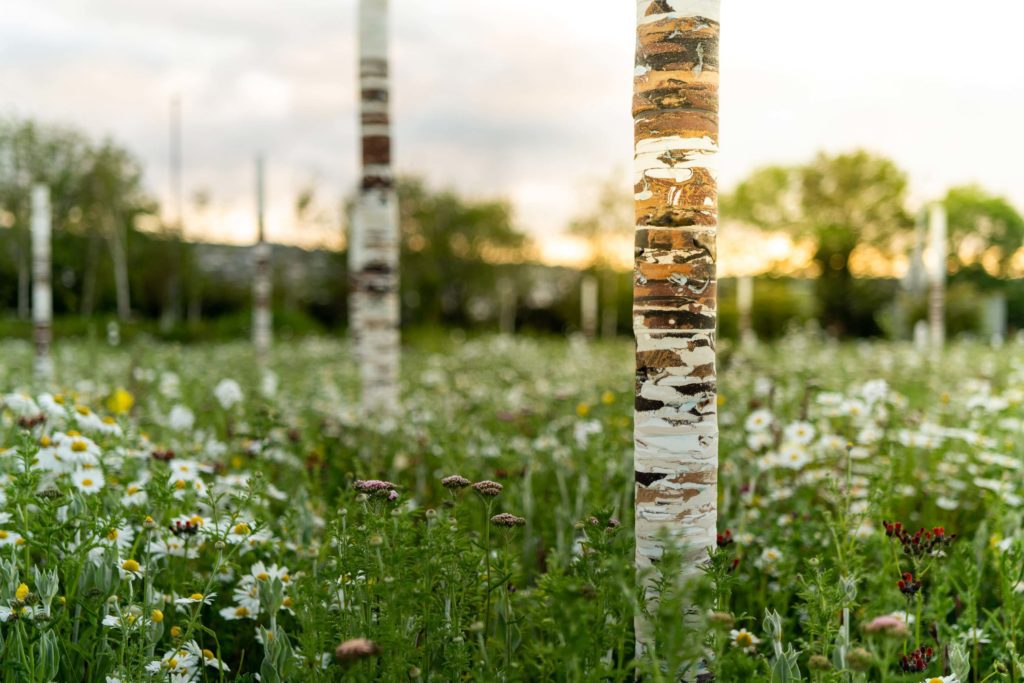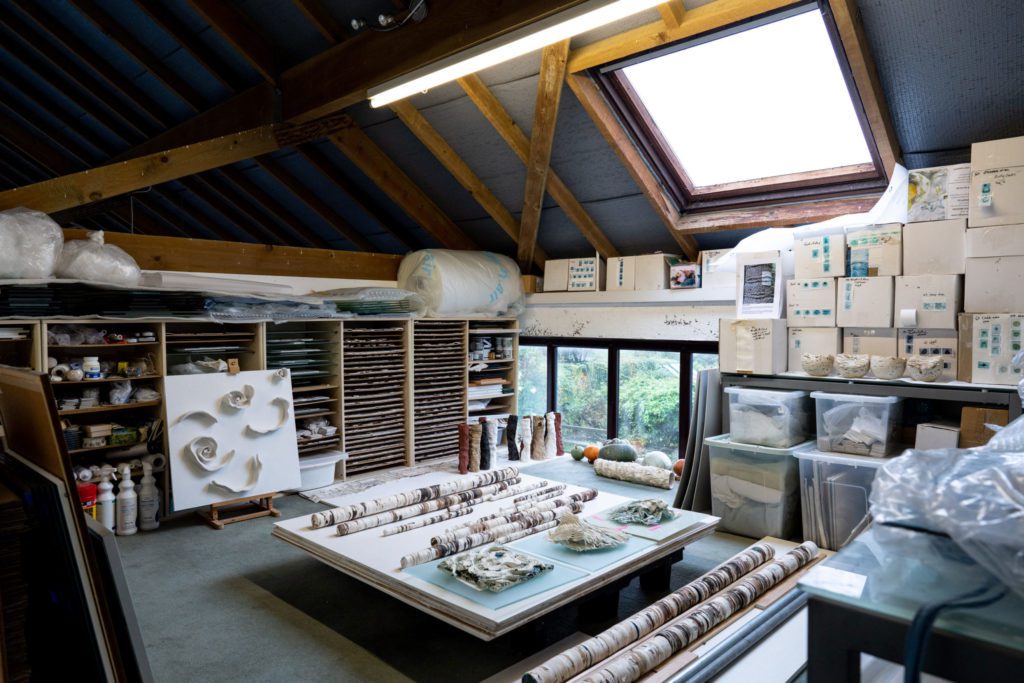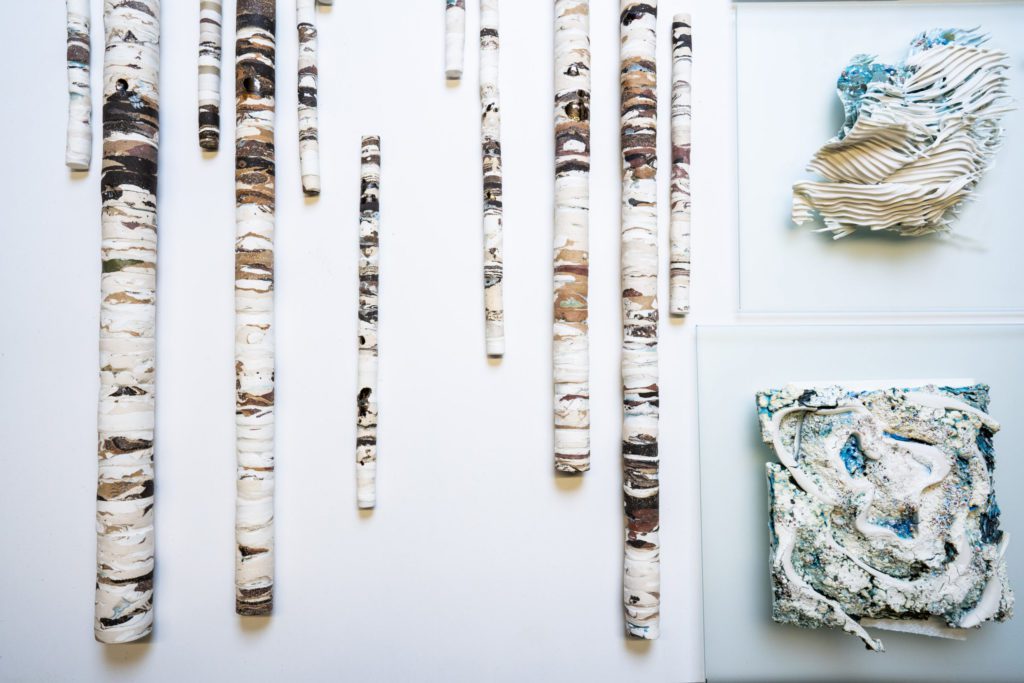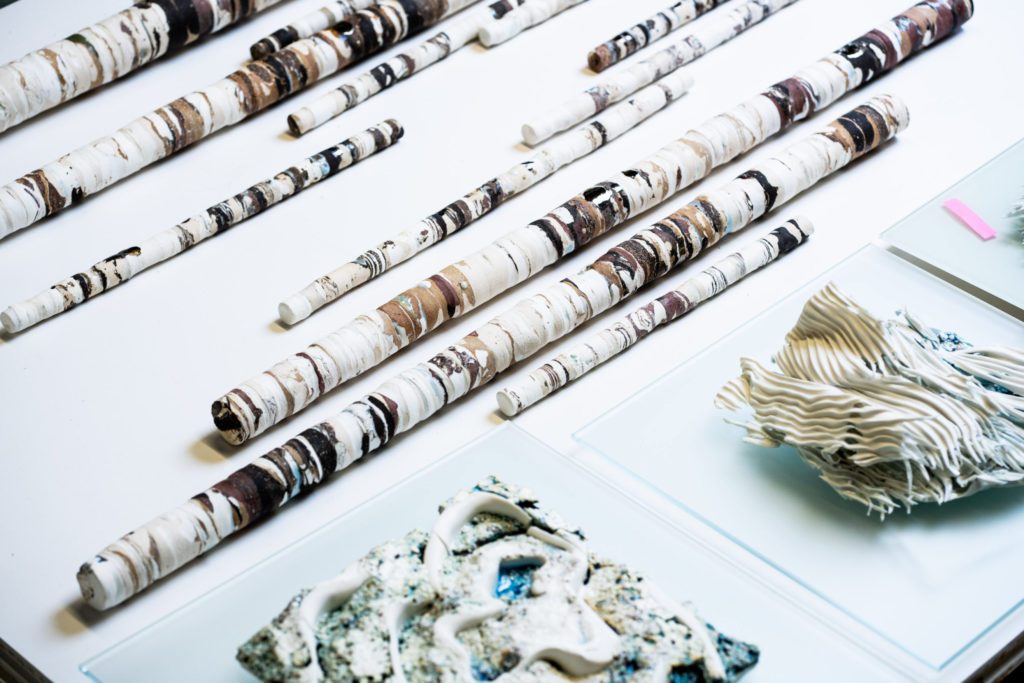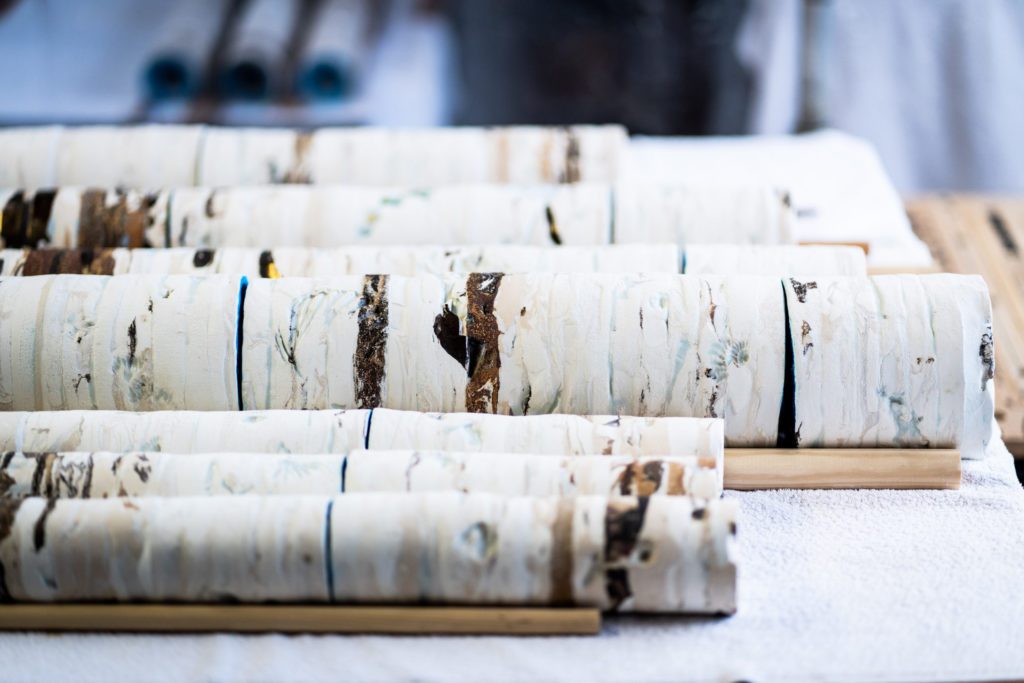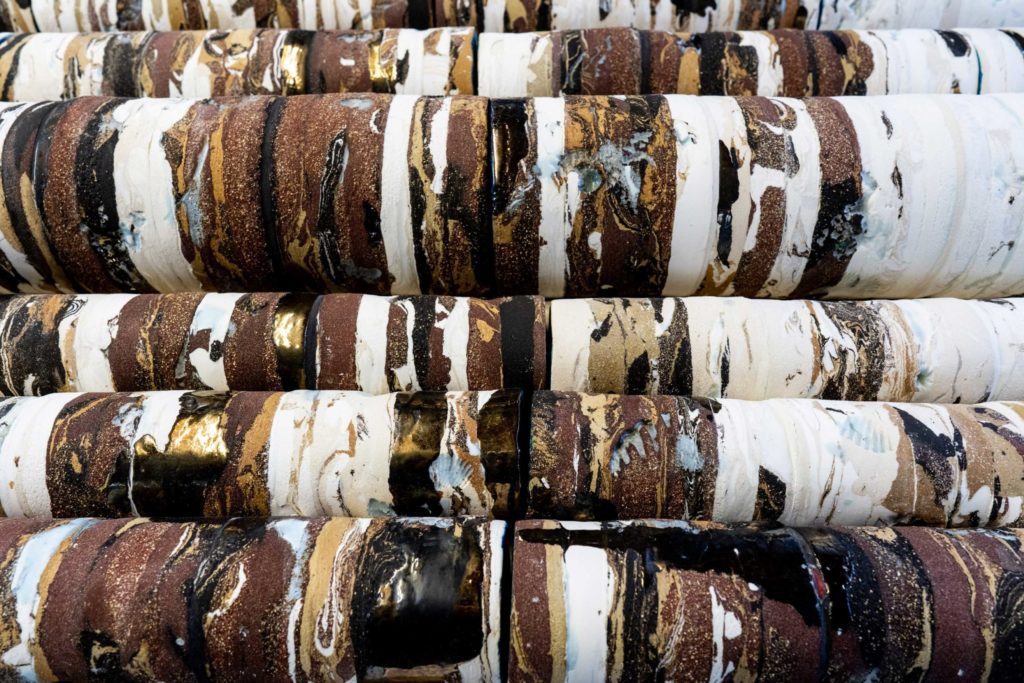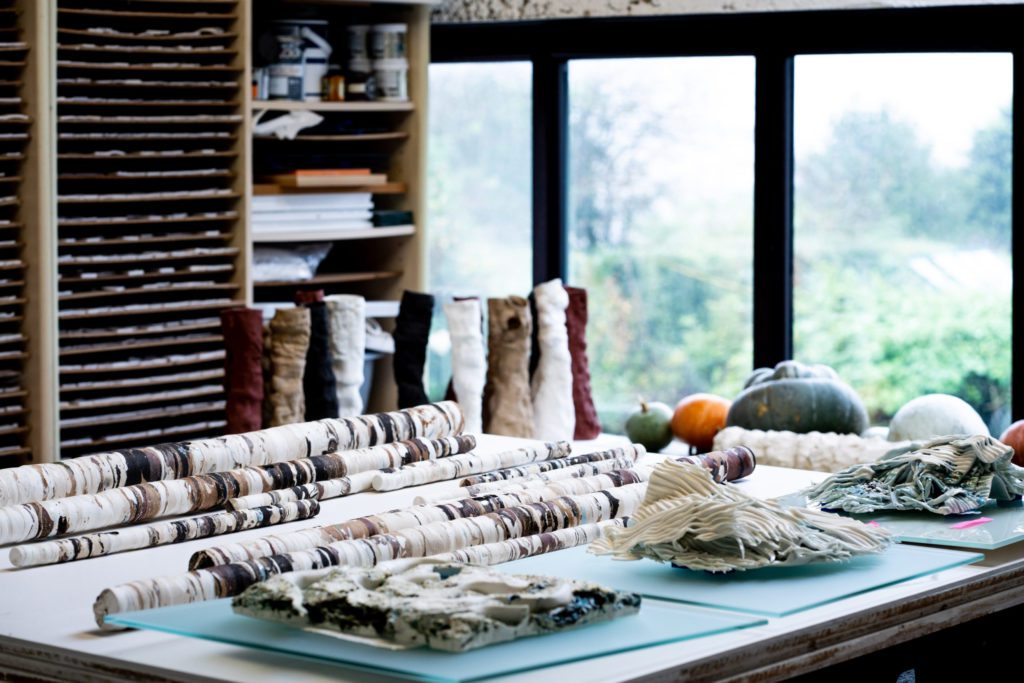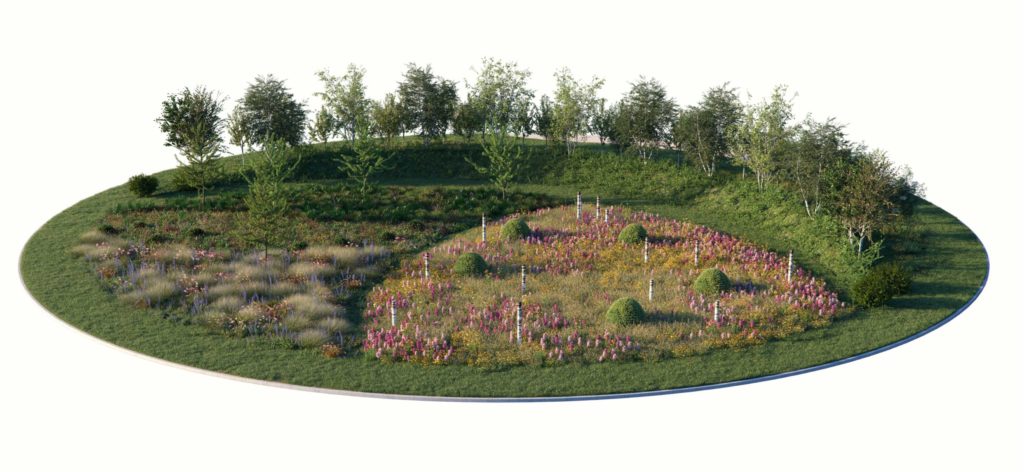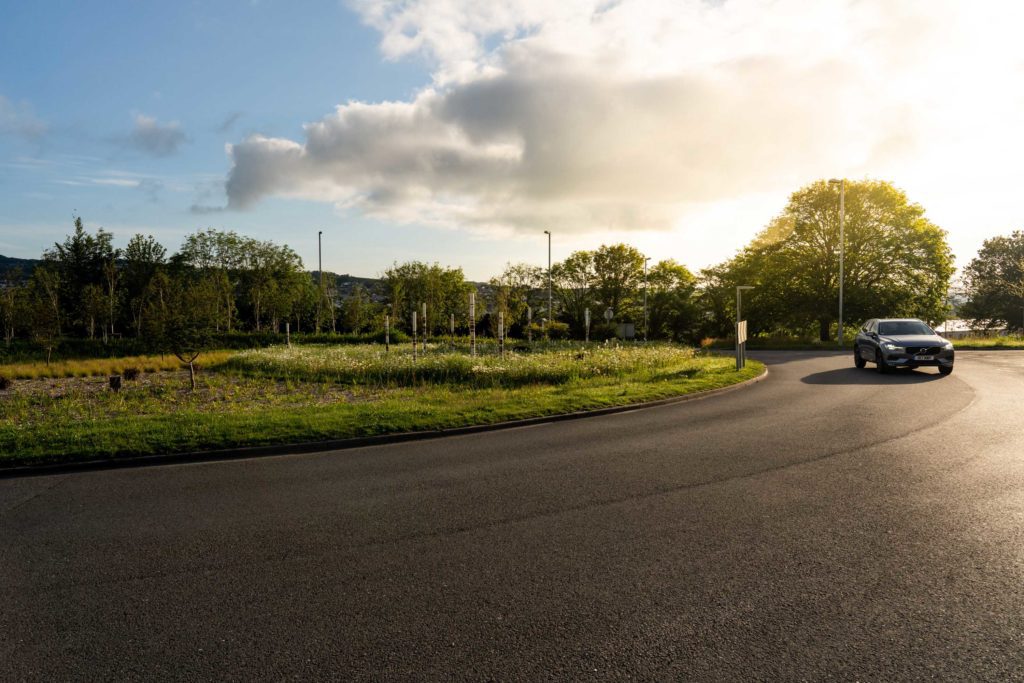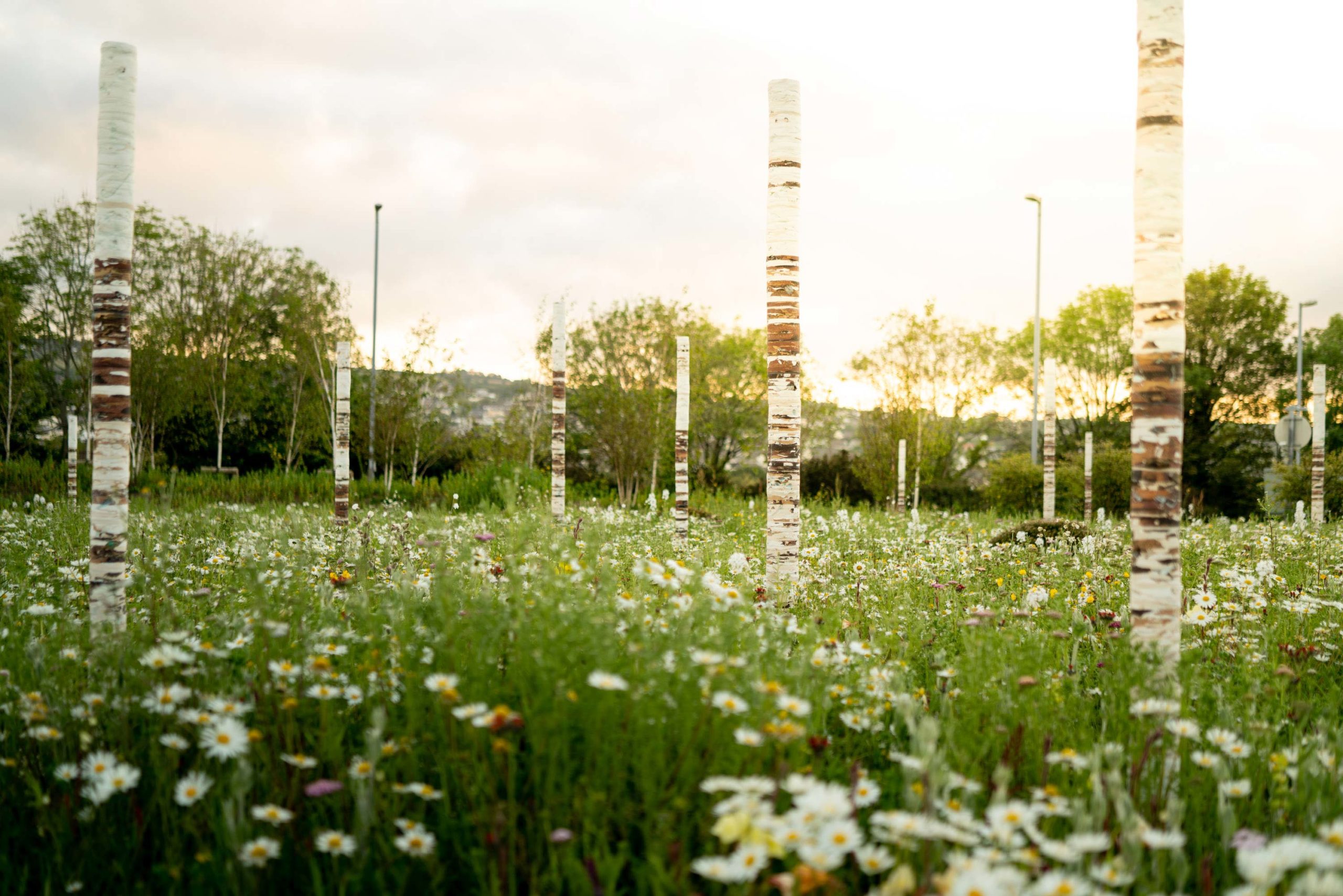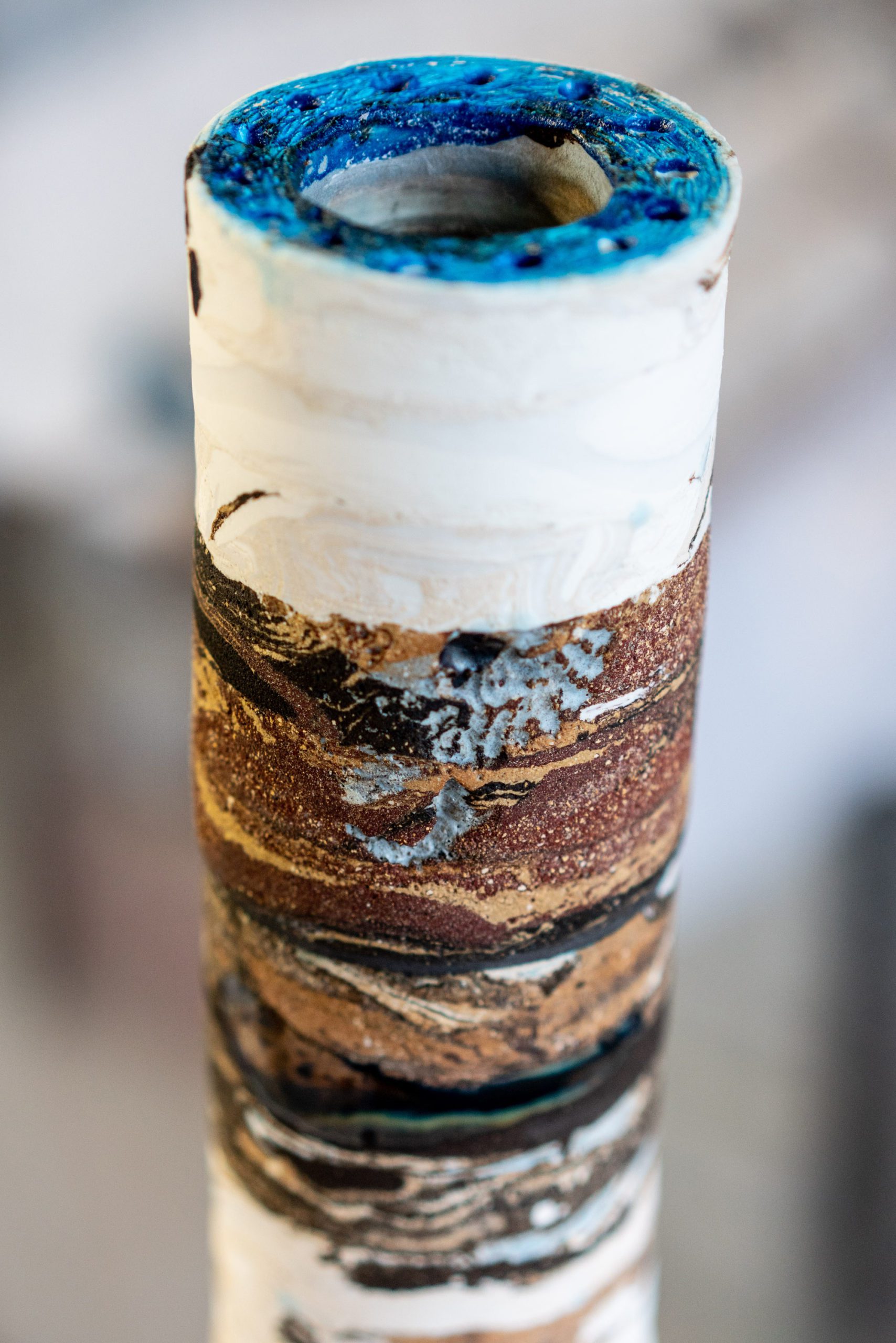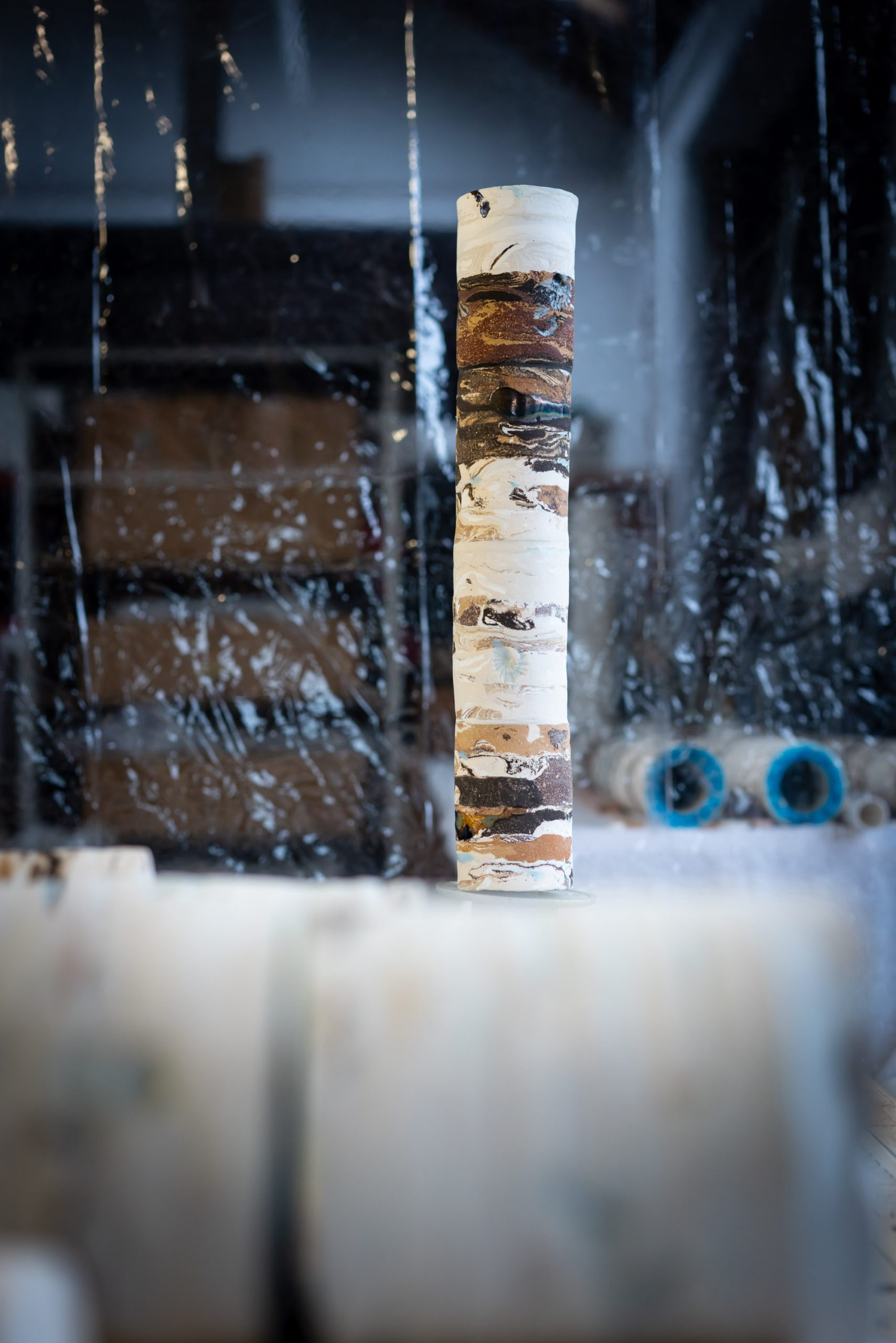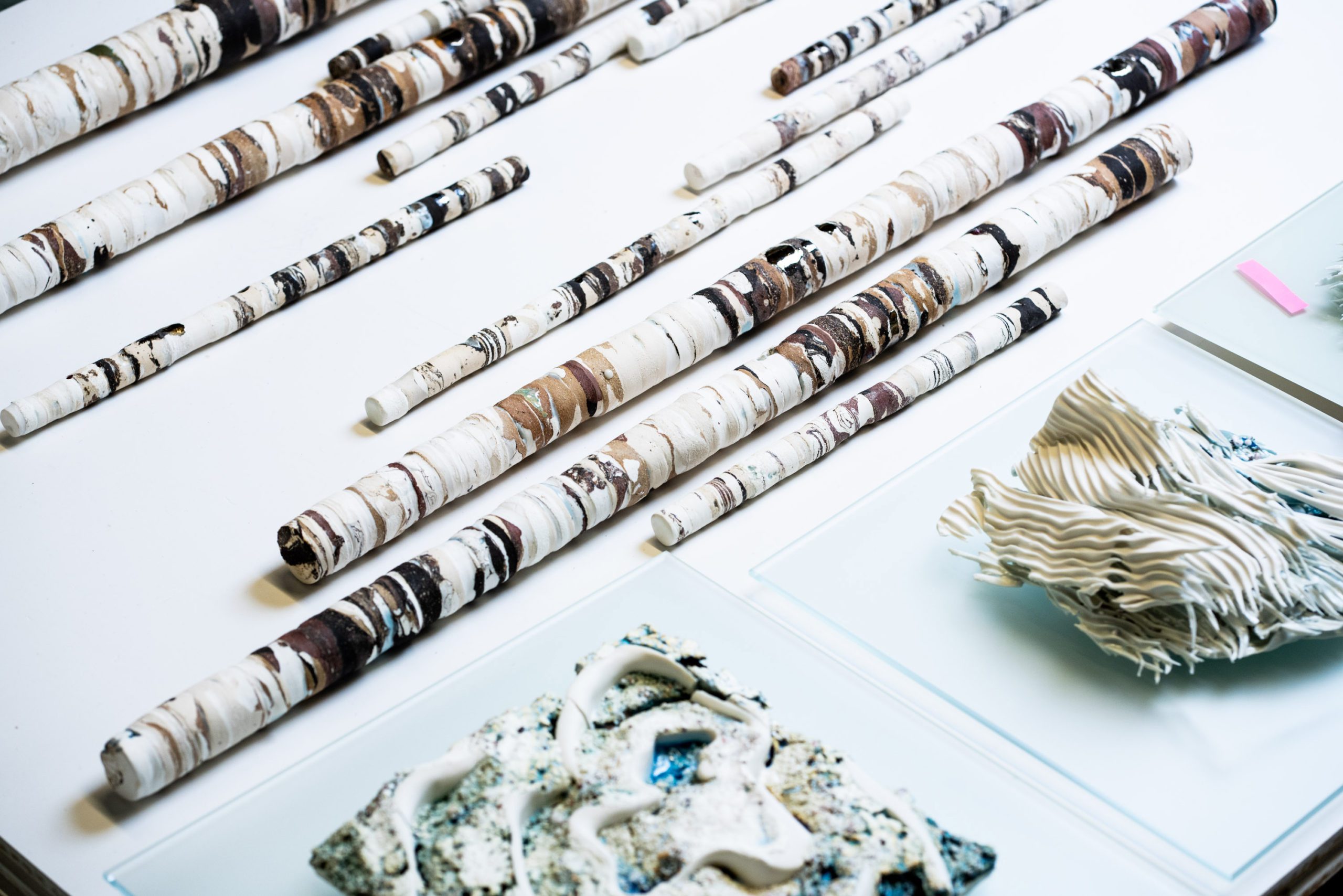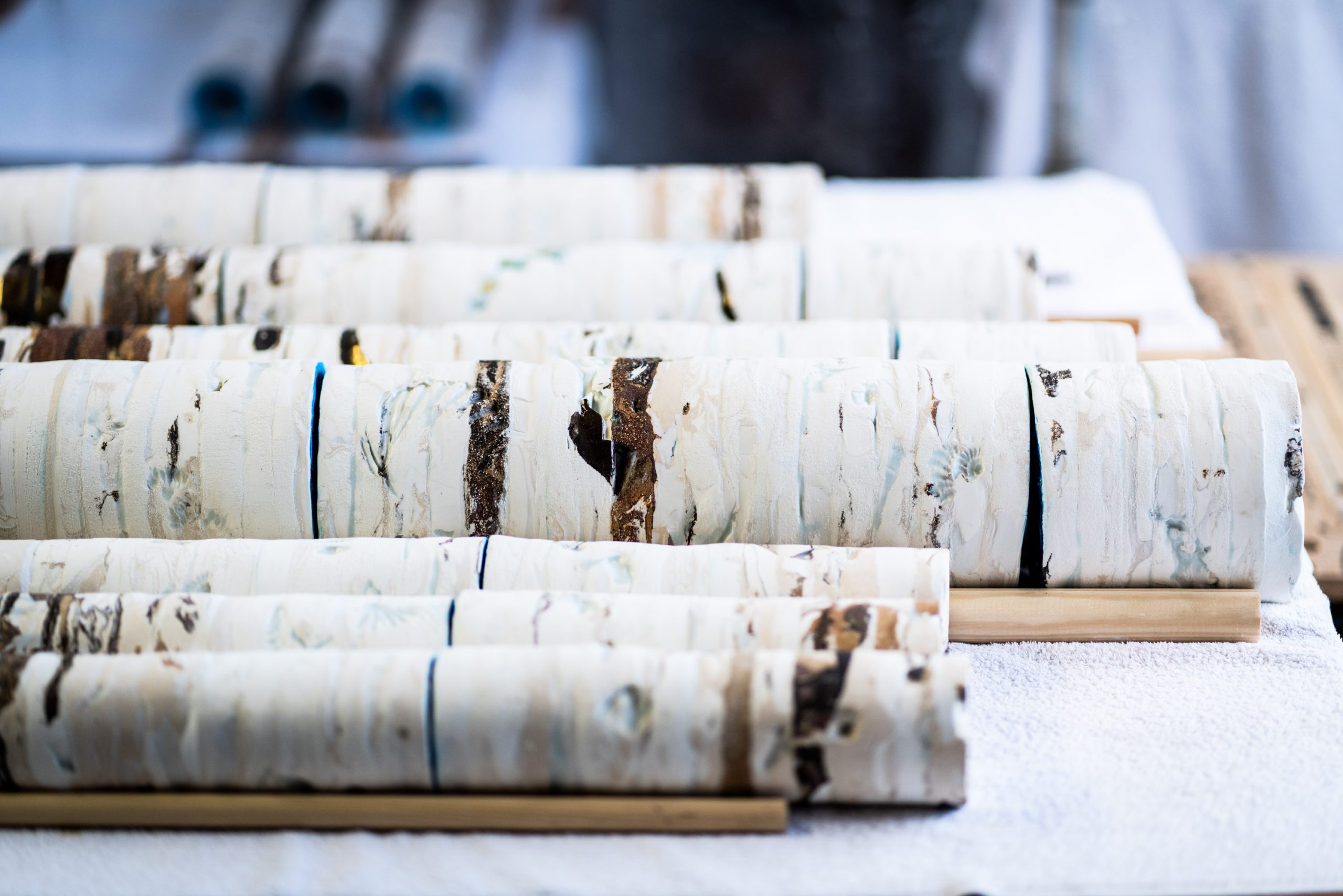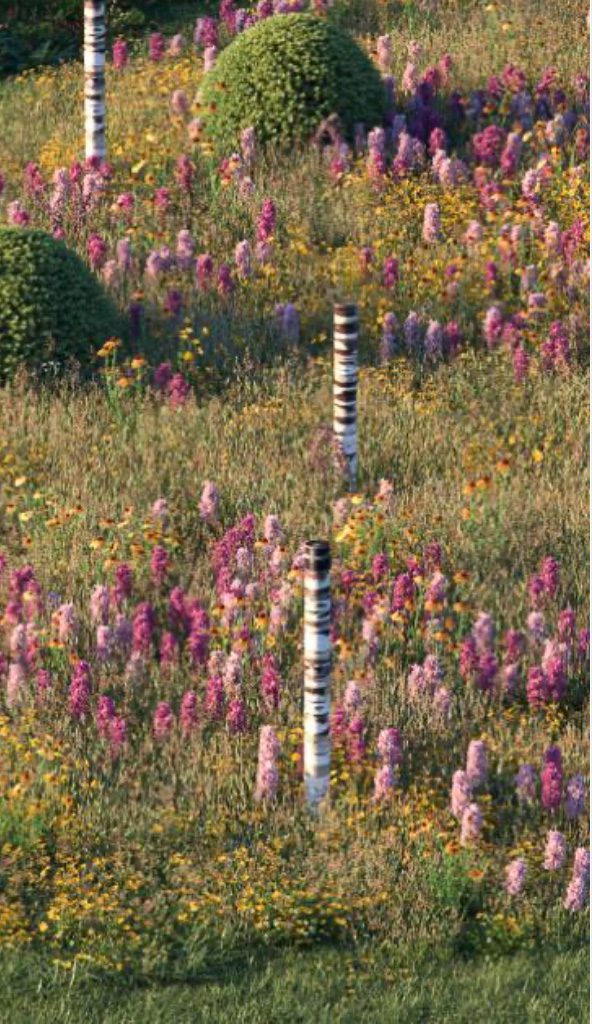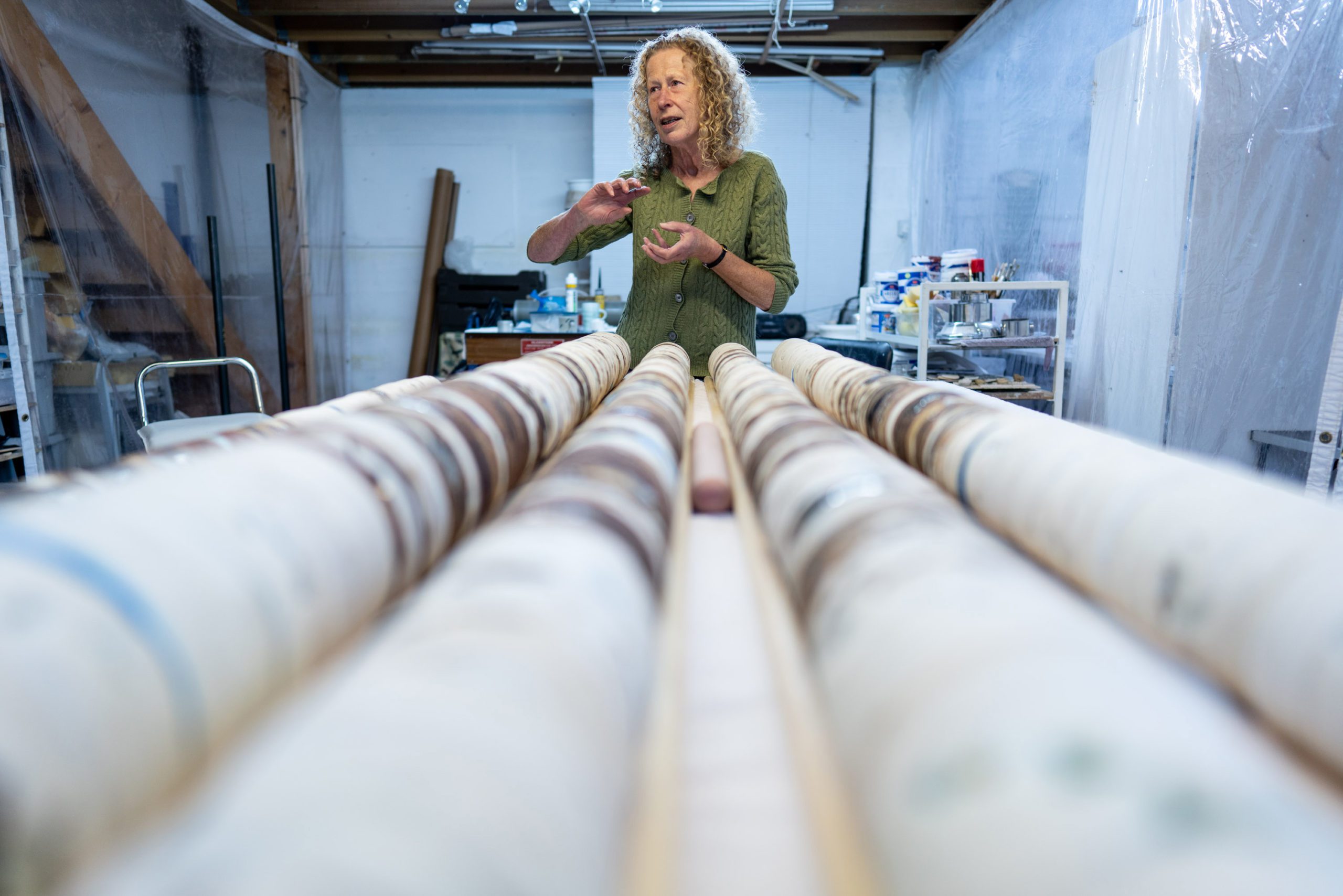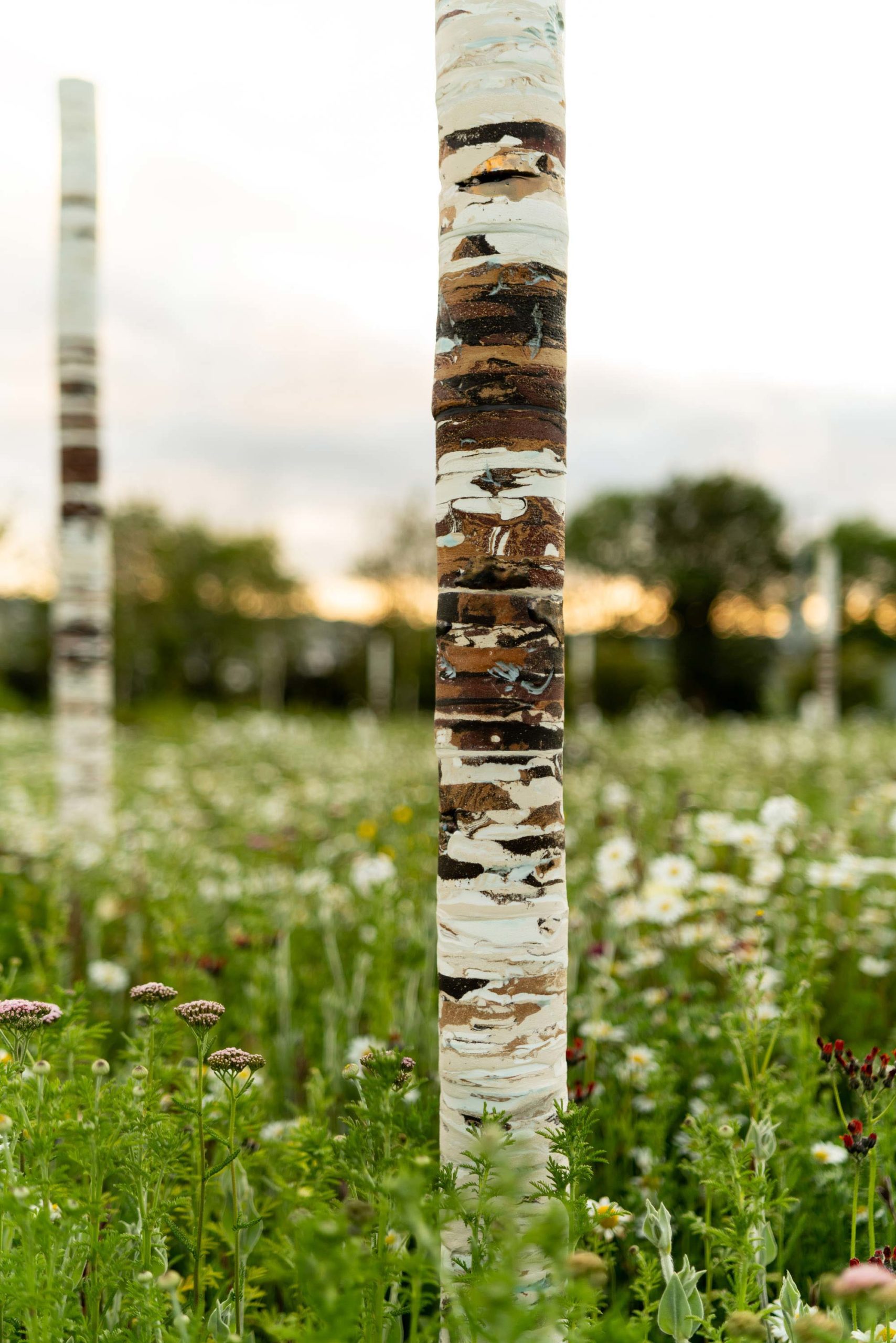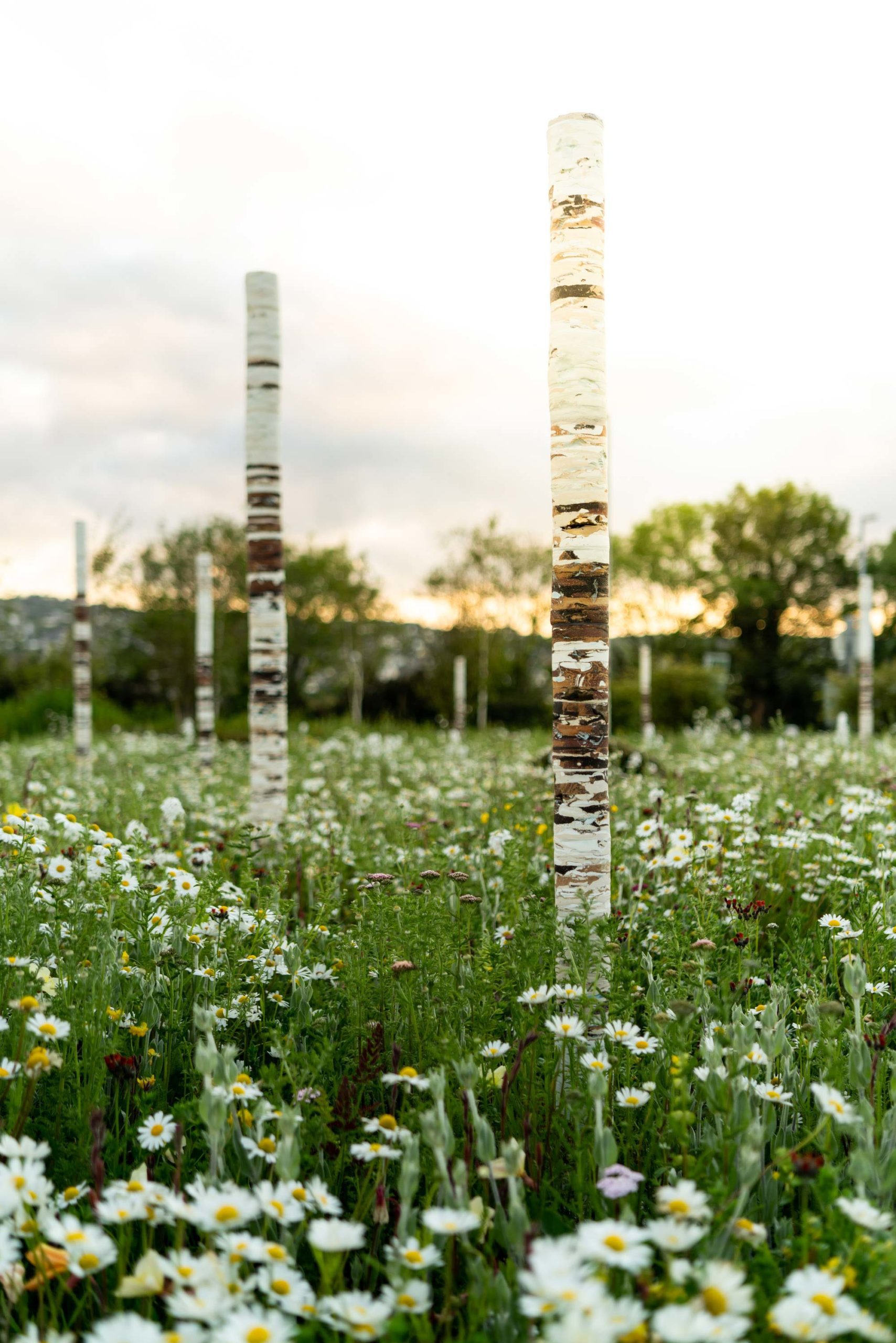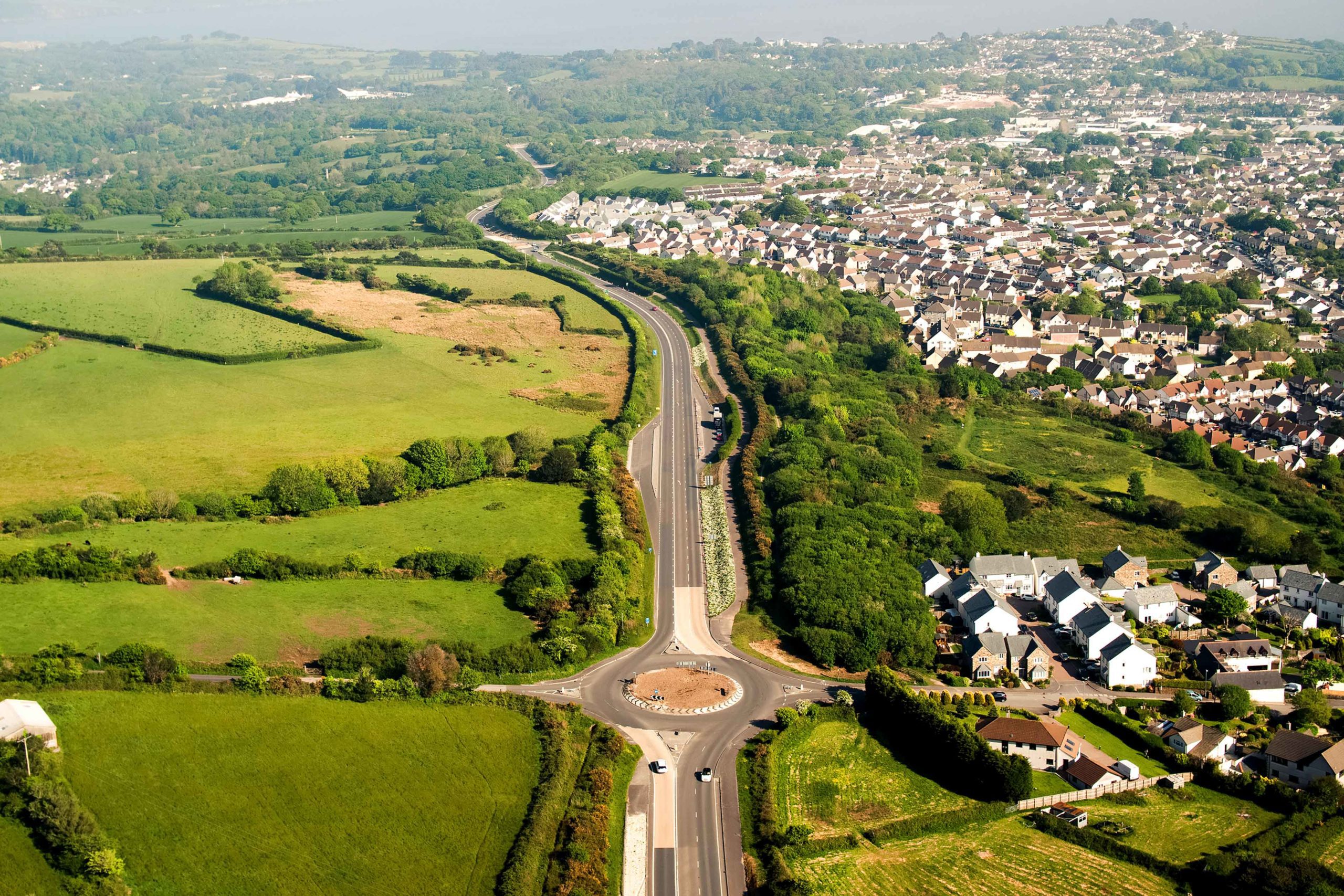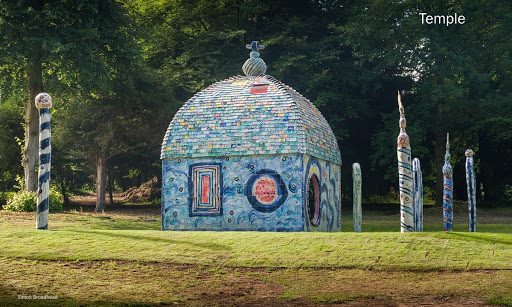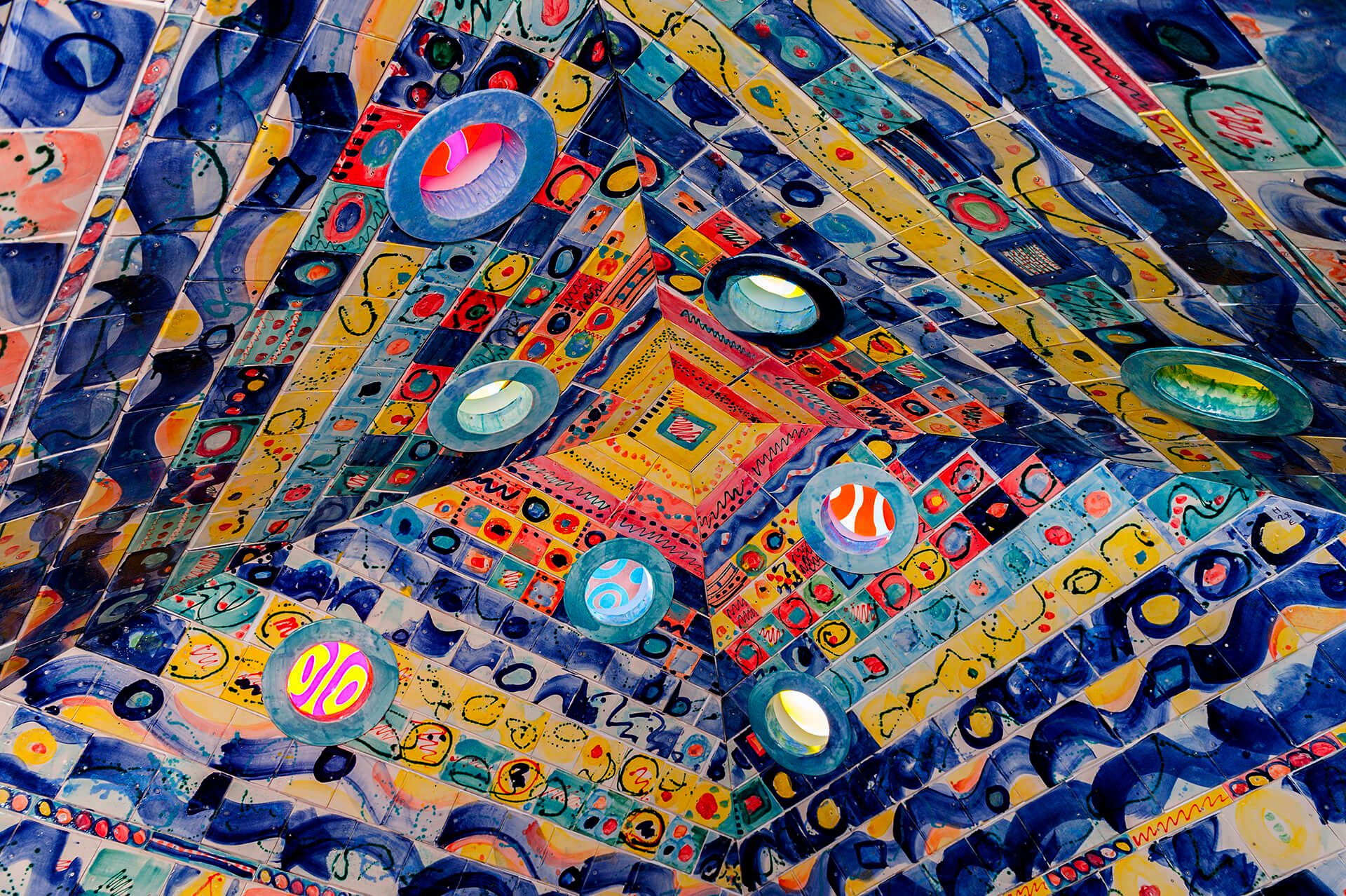The rocks beneath our feet shape our lives in many ways, providing material like stone and clay for our homes and the earth where plants grow. Here at Mount Charles, the entrance to St Austell and Charlestown, garden designer Darren Hawkes and artist Jenny Beavan have worked together to produce a garden that tells this story of this land, a Garden of the Clays. The garden is filled with plants that evoke the landscape around St Austell, from the silver birch with bark like the china clay to hardy plants adapted to the desert-like pits.
For the garden, Cornish artist Jenny Beavan has created a series of her distinctive Core sculptures showing the natural beauty of local clays, as if they had been extracted from the ground beneath. In these explorations of geology she uses pure white china clay, contrasted with rich iron red-browns, highlighted with mineral blues and golds. Jenny says: “As if being choreographed, the materials play their roles sometimes working in harmony with each other but also creating drama in their journey from wet through to dry, from clay to fired ceramic.”
This site is part of the Garden Route – a collective of mini-gardens, landscapes, roadside verges and roundabouts that geographically encircle the town, bringing more colour, enjoyment and wildlife to St Austell.
Jenny Beavan is a local ceramic artist with an international reputation. Her work is known for the textural and colour she uses which links it to the Cornish landscape. After a residency with Imerys, the Cornish china clay manufacturer, texture became integral to her work through the incorporation of clay granules, even the grasses and weeds that left their trace after firing.
Jenny has been commissioned to create a signature ceramic installation of her clay country core samples which will be installed at the Mount Charles roundabout as part of the St Austell Greening project. The installation connects the two key projects of the Austell Project – the Whitegold Project and Greening St Austell.
Celebrating the geology of the clay her work connects the site to the clay pits on the ridge behind the roundabout and welcomes visitors to the heart of the clay country.
“My work is an exploration into material and place observing in particular processes of interdependence between water and geological change. The intention is to capture a moment in a process of change and to reflect upon the physical and metaphorical aspects of a place as a vessel with containment.”
“Water saturates, shifts, seeps, explores, exploits, distracts, destroys, manoeuvres, penetrates, mixes, grades, attacks, finds a way, a path a passage, dislodges, surrounds, circulates, gravitates, yet can be drawn upwards to form clouds. It can contain contaminants, minerals, debris, and detritus. It can damage – uproot vegetation but gently carry its seed. It can create a multitude of sounds in its movement and yet at times travel peacefully in silence. It can be affected by external influences – light and dark, heat and air in motion. Water is constantly changing its condition.”
“The experience of walking and being in a place often creates the necessary impulse from which to respond. I will often, almost daily, follow a water course through a familiar landscape, where the activity of revisiting and being familiar with and more sensually aware, helps to shape and re-shape minute and seasonal changes. Terrain which visibly offers its contents such as crumbling coastal cliff edges, valley gorges, craters and volcanoes, underground mine-workings and the ever-changing industrial open-cast workings of the china clay pits, where each reveals unique geological and historic make-up and matrix content. Being inside, between or next such places always fills me with a sense belonging.”
